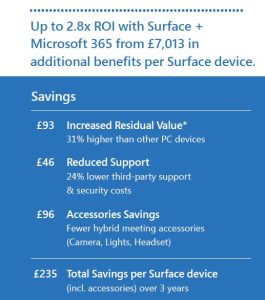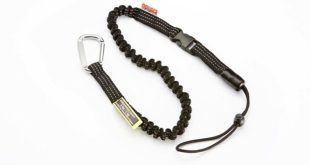The climate crisis affects us all – especially future generations. As the institutions primarily responsible for educating our young people, many schools are working hard to teach pupils about sustainability and adopt more climate-friendly habits. Organisations like the Green Schools Project and Let’s Go Zero are partnering with UK educational leaders to embed climate education into their curriculums and help them become more sustainable through a range of training, support and resources.
Schools are also under increasing pressure from the Government, parents and pupils to mitigate their own climate impact. Estimates suggest that in England alone, schools account for around 9.4 million tonnes of greenhouse gas emissions every year. In its Sustainability and Climate Change strategy, the UK Government says that by 2025 every education setting must have nominated a ‘sustainability lead’ responsible for putting climate action plans in place.
The education sector is tackling these challenges while dealing with ever tightening budgets, while the ‘green transition’ is often discussed as something that must involve higher costs and lower standards. Yet there are many ways schools can reduce their climate impact without sacrifice, and recent data shows when it comes to schools’ educational hardware – lower Total Cost of Ownership (TCO), higher value and improved sustainability can all go hand in hand.
How educational hardware can reduce schools’ environmental impact
As education becomes increasingly digital, many schools are using more laptops and other mobile devices as part of their teaching, and the hardware choices schools make can have a significant impact on their carbon footprint.
In a recent research report, Hardware TCO Concerns Driving a Flight to Quality, Microsoft interviewed IT decision-makers (ITDMs) across a range of organisations, including those from the education sector, to better understand their views in the current purchasing environment.
The findings revealed the average laptop lifecycle is now 3.2 years, but encouragingly, 74% of ITDMs are looking to stretch this out, with an extension of 1-2 years being planned by most (63%).
Why? Because, as 76% of respondents agree, reducing hardware purchase frequency saves money. This also makes a clear contribution to schools’ sustainability efforts by reducing consumption and waste, although it’s worth noting the extent to which improving TCO and sustainability by extending lifecycle length is dependent on build quality.
Indeed, the top three features that respondents to our TCO research consider important, are:
- Reliability – including consistent performance, without failure (58%)
- High specifications – including device power, speed, and battery life (56%)
- Durability – including the ability to withstand wear and tear (58%)
Durability and repairability are also deeply intertwined. As part of Microsoft’s commitments to become carbon negative, water positive and achieve zero waste by 2030, the Surface portfolio is circular by design, adopting a repair, reuse and recycle model that minimises waste and helps to extend the lifespan of devices for as long as possible.
The recently launched Surface Go 4, for example, is ideal for primary school students. It’s highly portable and lightweight for carrying between classes, includes touch and inking – so students can write, draw, take handwritten notes, and mark up assignments, and has an HD camera for virtual classes as well as a long-lasting battery for the whole school day. Internally, Surface Go 4 has undergone a total redesign to make it even more repairable – everything from the display, kickstand, motherboard, battery and more – can all be replaced.
So, by choosing Surface devices, schools can demonstrate their proactive commitment to sustainability.
Microsoft also publishes device reports for every single Surface model, detailing the carbon cost of designing and building the device. Itsfree online Emissions Calculator allows educational organisations to fully understand the impact of using devices on their own CO2 output, helping them carry out transparent carbon accounting and ESG reporting more easily.

While the average estimated carbon footprint of a laptop is around 422.5kg over a four year lifespan, around 80% of this comes during production, so being able to repair or delay a new purchase because a device is durable and powerful enough to last – has a big impact.
It’s also encouraging to see that, thanks to the circular design and energy efficiency of the Surface range, as well as using 94% recycled packaging – the highly repairable Surface Pro 9 has less than half the average carbon footprint, at 190kg over four years.
School IT leaders know how to make hardware budgets go further
Whether you’re a head of school focused on delivering modern learning experiences while maximising value, or a bursar responsible for strategic investment in assets – hardware spend and choice really matters.
Our TCO research demonstrates just how well the vast majority of IT leaders appreciate this – 84% of UK ITDMs continue to invest specifically in premium devices because of the total cost savings they can bring, showing a clear understanding of the Total Cost of Ownership (TCO). And 89% explicitly say TCO is a consideration when deciding what hardware to buy.
This is because school ITDMs appreciate that when it comes to device quality, customers get what they pay for: 83% say buying low-end laptops means you pay more for maintenance and repairs in the long run, and 85% say they end up effectively costing more due to poorer efficiency.
More than eight out of ten (84%) respondents say when it comes to hardware, if you buy well – you buy once, and 85% say investing in premium laptops also helps reduce spending on peripherals.
These views are backed up by additional research from IDC, which was commissioned by Microsoft to independently and extensively investigate the ROI of Surface devices powered by M365. IDC conducted in-depth interviews and surveyed 700 organisations, all of which use at least 150 Surface Laptops, and found they delivered an ROI of 2.8x over three years.

Microsoft and IDC have created a free online TCO calculator, for school IT leaders to check for themselves how Surface and Microsoft 365 can save money by simplifying operations, reducing security risks, and improving productivity.
The analyst group Forrester was also commissioned to carry out an independent study into the total economic impact of Surface devices in education and found an average ROI of 44%. This was due to a range of time savings for teachers, administrators, and IT staff – as well as cost savings from retiring unnecessary peripherals and solutions, reduced chance of a security breach, and reduced deployment, peripherals, and software licensing costs.
For example, using digital inking rather than printing on paper (which by itself saved UK boarding school – Wellington College, £120 per device), sharing online resources rather than hardcopy textbooks, being able to use in-built cameras rather than buying add on webcams… All these savings add up. Not to mention the higher residual and resale value that more premium, recyclable, and repairable devices command.
Finally, Surface devices come pre-installed with Windows 11 Pro, Microsoft 365 (which includes Microsoft Teams), and tools for the IT team, like Windows Autopilot. All too often, essential software and IT management tools are sold as expensive paid add-ons.
Better for students, better for budgets, and better for the planet
By leveraging the expertise of school IT leaders, and focusing on value as well as price, educational organisations can play their part in building a cleaner, greener future while continuing to modernise the learning experience and improving educational outcomes for pupils.
With a sound appreciation for total cost of ownership and the realities of pupils and teachers’ everyday lives, it’s easier to see how value and sustainability really do go hand in hand.
If you’d like to learn more about how the Surface portfolio could work for your school – please visit the Microsoft homepage for UK educational organisations.
 Education Today Education Today Magazine
Education Today Education Today Magazine
